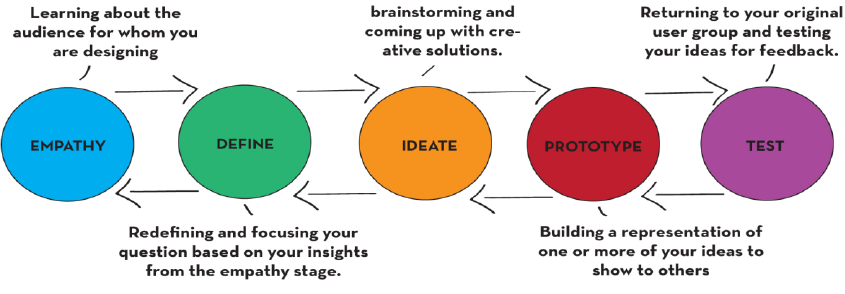The Great Opportunity for Innovation in Education
- leanasindi
- Mar 1, 2021
- 4 min read
Updated: Apr 12, 2021
Yes, [current e-learning platforms] are experimenting with big tech like AI and machine learning, but that’s just putting fresh icing on a very expired cake.

The education sector is ripe with opportunity for truly disruptive innovation and here’s why:
The classroom configuration model hasn’t changed in over 100 years.
Current e-learning platforms have just taken the classroom experience and put it online.
The purpose for which the current education model was built upon is outdated.
Industries + sectors as large as Education have progressed far more in the last 100 years and it’s time for education to catch up.
Over a hundred years later and we still have kids and college students sitting at wooden desks, lined up in rows, facing the instructor. Sure, the whiteboard may have become an interactive whiteboard and maybe you’re thinking not all desks are wooden but setting aside the minutiae, the format of a classroom hasn’t changed. And it’s not just the physical setup, it’s the “classroom etiquette” or process standard and what we are teaching. The teacher lectures, the students watch and take notes and raise their hand if they have a question. In some more “progressive” institutions, you may have time for open-floor discussions, collaborative work or mini breakout teams, but the majority of learning is oration.
Now, if we look at current e-learning platforms, they have more or less simply moved the classroom experience online. Yes, they are experimenting with big tech like AI and machine learning, but that’s just putting fresh icing on a very expired cake. AI and machine learning will build on the fundamentals of the system and processes we put in place - but we need to use our human brains to drive the direction of reconfiguring education and what its processes look like.
On most e-learning platforms, you’ll find the same elements as a classroom - the instructor, the student body, the syllabus and a screen that communicates the instructor’s information. There’s also generally a ‘raise your hand’ feature and a chatroom for team discussions, just as you’d have in a regular classroom.
You may be thinking - yeah and what’s wrong with that?

What’s wrong is that the problem that education is meant to solve has evolved over the years to a much greater extent than has the general education model itself and our understanding of what an education looks like. This is a call to action to dig into the reason for education - why did we start schooling people over a hundred years ago and how has that purpose of education changed today - because it has. Education as a concept is simply to prepare a person for the world we are living in and clearly that world has made great evolutionary leaps, so why hasn’t our education system done the same?
Just think about how a hundred years ago we hand-wrote letters that we sent by carrier-pigeon or by foot and today we touch a portable screen and 1 second later someone on another continent sees and hears you speaking to them. The innovation between the pigeon and the video call is a major leap and sure it evolved in stages, but at some point, someone changed the game by completely rethinking how we might get a message to another person.
Furthermore, if our world has changed so much so as to make leaps like that technologically possible, then it’s really time that we properly prepare generations for thriving in that world and that starts with redefining the problem that education must solve and in so doing, redefining an education.
We need to invest in harnessing and sharing a better understanding of the instruments we have to play with and how the playground, outside the man-made bubble that is the classroom, really works.
This is a great journey that requires strategic research and boundless creativity. There is an opportunity here to completely turn education on its head and ask why we have it, what really is an education at its core and what does that mean today. Let’s combine research into fields of psychology and brain architecture and successful and unsuccessful educational institutions around the world and how consumer behavior has shifted (because students are consumers at the end of the day - quite literally, consuming the information of their education). Let’s make the time to understand what it takes to be successful in every and any kind of field and how we can better train the man on the street and the leaders of tomorrow to be more confident in maneuvering the exponentially fast-changing landscape of living.

Beyond just professional success, I believe that preparation of the sort will help reduce the great social wars we fight for mental health, for social justice, for humanity - all of which have been crying out, all of whose screams have grown louder with technological advancement and the changing of our world. I believe that by helping to shape the growing minds and their abilities to not only cope with but to really take charge of the advances being made by the technology we use, and thus the world of possibilities in which we operate, we will ultimately be building a more cohesive world. We need to invest in harnessing and sharing a better understanding of the instruments we have to play with and how the playground, outside the man-made bubble that is the classroom, really works.
In medicine we went from punching a person unconscious for surgery, to precision medication and (gene) targeted therapies. In transportation we went from a wheelbarrow to nearly self-driving automobiles and flying saucers that take us to outer space! Let’s find out what education can do for our society, by really pushing ourselves outside the comfort zone of tradition, to what we can do for education.
The first step is to start asking why; it’s a small step to put into practice now, but a great leap for our society of the future.
The next post in The Future of Education series, will cover the origin of our modern day schooling, pointing out why and how the system and the problems it was built to solve are outdated and in desperate need not just of reform but replacement.
Additionally, if the problem of education outlined in this article has piqued your interest, I invite you to watch the very entertaining and sharply insightful 5 minute video of American rapper and rights activist, Prince Ea, demonstrating a case against the modern schooling system.



Comments